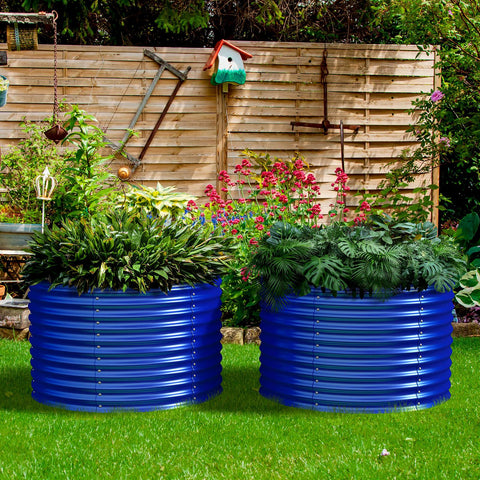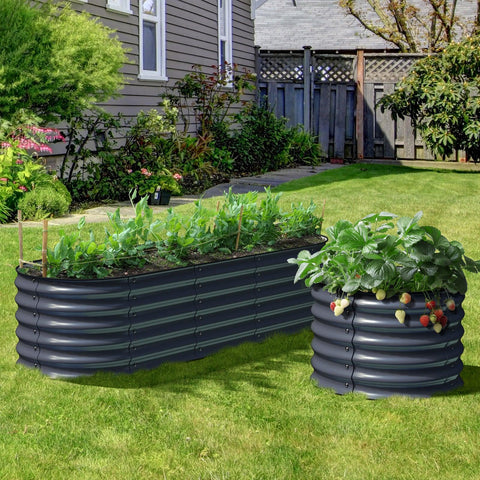5 Smart Ways To Use Sand In Lawns, Gardens And Garden Beds
Sand is not only suitable for beaches, although it is not so popular in residential use, but it is very popular on golf courses to use sand as topdressing. Since golf courses are known for their impeccable grass, you might wonder if you should also start using sand. After all, it is affordable and can be found in almost any garden center. But using sand is not as simple as it sounds. It is not always the best solution for every lawn. Use these guidelines from Olle Garden Beds to find the best ways for your needs.
It may be surprising to learn that sand can be used in many ways at home, around gardens and lawns. Here are all the ways you can use this material to improve the health of all the plants in your home. Just make sure you use builder's sand, not play sand or beach sand. It is sometimes even recommended that sand be disinfected before it is used in gardening to ensure that there are no bugs or bacteria that could harm plants.

- Add it to the clay heavy topsoil
Although some claim that adding sand to topsoil is a good idea, this is not always the case. Frequent addition of sand to the topsoil will damage the health of the lawn, rather than improve it. The reason why golf courses can use them so successfully is their ability to maintain and take care of the lawn every day. Most likely, although you may water, mow and sow your garden; You don't have time to fertilize, prune and care for grass like them.
However, if you live in an area where the soil is full of clay, adding sand to the topsoil may be beneficial to the health of the soil and the grass you are trying to grow. It will bring good drainage in places with wet moss, so that the roots can dig deeper to find the needed nutrients. Just make sure not to overuse it, or you will risk choking grass and killing it. A small amount of grass can go a long way, or if you plant new grass on the bare ground, use tillers or rakes to mix the sand into the topsoil before sowing.
- Use it to balance turbulence
If you use a lawn mower to cut grass and find that your brain feels like scrambled eggs after riding on the rugged lawn, you may need to consider using sand to balance the bumps. Sand is the perfect tool to solve this common problem. Whether these depressions in the yard come from the collapse of the mole's tunnel, the removal of trees, or the dog's inability to stop digging, they are annoying. It can even make it difficult to use the push lawn mower, and make it more difficult to do housework that is already very stressful.
The next time you are in the local garden center, take a bag from the builder's sand. You can use it to fill in vulnerabilities. Because the sand is heavy and fine, it will smooth the transition from sand to soil, and the grass will soon return to the sand - cutting grass or throwing a ball for a dog will not hurt your ankle.
- Preserve exposed roots
The giant tree in the yard is amazing and provides fantastic shadows, but its roots may be too close to the surface. Sometimes roots like this can even grow so high from the ground that the mower begins to catch them. This is terrible for the health of your mower blades and trees. Cutting like this will cause wounds in the root, making it more susceptible to disease and decay. Eventually, this may kill the tree.
To protect the roots and mower, you can use an equal amount of sand and soil mixture. Slowly build a layer to completely cover the root, and continue until there is about 3 to 4 inches of soil between the surface and the root. The grass will regrow on the new topsoil, and your roots are now protected. The sand makes the mixture heavy enough to stay in place, but also allows good drainage and ventilation.
- Mix it with soil for multiple purposes
Additives that you must purchase to produce a soil mixture may be expensive, but you can replace some of them with sand. For example, indoor plants are locked in a small flowerpot instead of underground. This makes them vulnerable to root rot if the soil drainage system they are in is not good enough. According to the habits of small gardens, adding sand to the potting soil mixture can fight this battle, and it is less messy than perlite. When you use sand and perlite, there are no ugly white specifications on the top of your soil.
In addition, sand can be used for landscaping to help combat erosion. Usually, our landscaping is located in hills, depressions or near downpipes, where there is a lot of water flowing. You can use sand mixed with topsoil to strengthen the area and mitigate the effects of erosion. This will protect the plants in the area from losing all the precious soil around their roots.

- Spread plant cuttings among them
If you have many indoor plants, you may spend an afternoon pruning and pruning them. Finally, you have a pile of leaves, sometimes completely healthy, and you can use them to grow new seedlings. However, if you use containers and propagate with water, once the roots begin to grow, new plants may have difficulty adapting to the soil. In addition, not all plants can reproduce in water and soil. However, when you use soil for reproduction, it is difficult to know whether the cutting is good or is taking root because you cannot see them. Moreover, the soil movement is not easy enough to pull out the plants without taking the risk of breaking new roots.
Instead, use sand. Sand is the perfect choice for breeding cuttings, because it can keep water without suffocating plants. It is also much easier to move plants from sand to soil. Finally, it is easier to check the root in the sand, because the sand will fall down gently, so you can see how much progress has been made in the small root.
